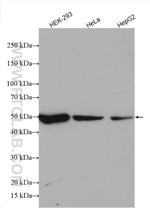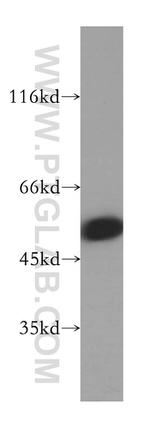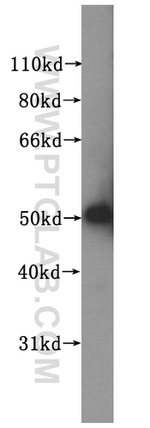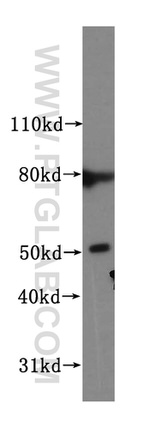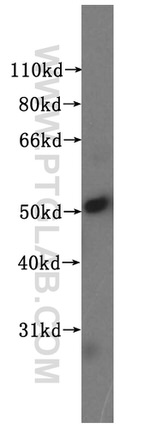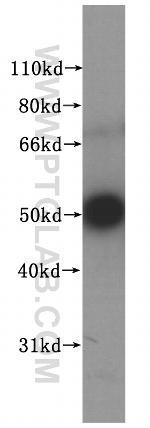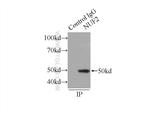Search Thermo Fisher Scientific
Product Details
15731-1-AP
Species Reactivity
Published species
Host/Isotype
Class
Type
Immunogen
Conjugate
Form
Concentration
Purification
Storage buffer
Contains
Storage conditions
Shipping conditions
Product Specific Information
Immunogen sequence: ETADILCPK AKRTSRFLSG IINFIHFREA CRETYMEFLW QYKSSADKMQ QLNAAHQEAL MKLERLDSVP VEEQEEFKQL SDGIQELQQS LNQDFHQKTI VLQEGNSQKK SNISEKTKRL NELKLSVVSL KEIQESLKTK IVDSPEKLKN YKEKMKDTVQ KLKNARQEVV EKYEIYGDSV DCLPSCQLEV QLYQKKIQDL SDNREKLASI LKESLNLEDQ IESDESELKK LKTEENSFKR LMIVKKEKLA TAQFKINKKH EDVKQYKRTV IEDCNKVQEK RGAVYERVTT INQEIQKIKL GIQQLKDAAE REKLKSQEIF LNLKTALEKY HDGIEKAAED SYAKIDEKTA ELKRKMFKMS T (105-464 aa encoded by BC008489)
Target Information
This gene is one of several human genes similar to the C. elegans gene Fox-1. This gene encodes an RNA binding protein that is thought to be a key regulator of alternative exon splicing in the nervous system and other cell types. The protein binds to a conserved UGCAUG element found downstream of many alternatively spliced exons and promotes inclusion of the alternative exon in mature transcripts. The protein also interacts with the estrogen receptor 1 transcription factor and regulates estrogen receptor 1 transcriptional activity. Multiple transcript variants encoding different isoforms have been found for this gene.
For Research Use Only. Not for use in diagnostic procedures. Not for resale without express authorization.
Bioinformatics
Protein Aliases: cancer/testis antigen 106; cell division cycle associated 1; Cell division cycle-associated protein 1; hNuf2; hNuf2R; hsNuf2; Kinetochore protein Nuf2; NUF2, NDC80 kinetochore complex component, homolog
Gene Aliases: CDCA1; CT106; NUF2; NUF2R
UniProt ID: (Human) Q9BZD4
Entrez Gene ID: (Human) 83540
Molecular Function:
![]() non-motor microtubule binding protein
non-motor microtubule binding protein

Performance Guarantee
If an Invitrogen™ antibody doesn't perform as described on our website or datasheet,we'll replace the product at no cost to you, or provide you with a credit for a future purchase.*
Learn more
We're here to help
Get expert recommendations for common problems or connect directly with an on staff expert for technical assistance related to applications, equipment and general product use.
Contact tech support

